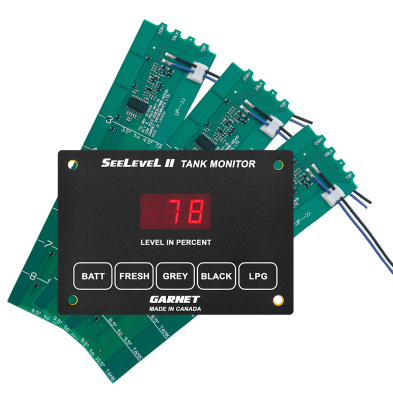When camping season ends and temperatures drop, your RV needs protection. The most critical task is winterizing the plumbing system. This involves draining all water and then adding non-toxic RV antifreeze to prevent pipes from bursting in freezing conditions. It’s a crucial process that prevents expensive, catastrophic damage and ensures your rig is safe for its long winter nap.
Why You Can’t Skip Winterizing Your RV
Before you begin, understand that winterizing isn’t just a recommendation—it’s essential insurance against the destructive power of ice. When water freezes, it expands by about 9%. This expansion generates enough force to split plastic pipes, crack fragile fittings, and destroy your water heater or pump.
These aren’t minor repairs. A single burst pipe can lead to widespread water damage, mold growth, complex plumbing repairs, and a significantly delayed start to your spring camping season. Think of winterizing as the final, most important maintenance task of the year.

The Core Goals of Winterization
The entire process boils down to a few key objectives. No matter which method you choose, the goal is always the same.
- Remove All Water: This means completely draining the fresh water tank, gray and black holding tanks, and especially the water heater.
- Protect the Entire Plumbing System: Every water line, faucet, toilet, and the water pump must be protected. You can either do this by blowing all the water out with compressed air or by replacing it with RV-specific antifreeze.
- Prepare for Secure Storage: Beyond plumbing, winterizing includes steps to protect your RV’s appliances, batteries, and exterior from pests and the elements while it’s stored.
A common rookie mistake is simply opening the low-point drains and assuming the job is done. Water always gets trapped in low sections of plumbing, P-traps under sinks, and inside the water pump itself. These hidden spots are where the most expensive freeze damage occurs.
Comparing RV Winterization Methods
Deciding between air and antifreeze? Here’s a quick comparison to help you choose the right method for your RV and confidence level.
| Method | Primary Goal | Pros | Cons |
|---|---|---|---|
| Compressed Air | To blow every last drop of water out of the lines, leaving them completely empty. | No antifreeze taste in spring, less expensive (no antifreeze to buy each year). | Requires an air compressor; can miss small water pockets if not done thoroughly. |
| Antifreeze | To replace all water in the plumbing system with non-toxic RV antifreeze. | Ensures every part of the system is protected; considered more foolproof for beginners. | Need to flush the system well in spring; ongoing cost of antifreeze. |
Ultimately, both methods work effectively when done correctly. The antifreeze method is often considered more reliable for beginners, while many experienced RVers prefer using compressed air.
This guide provides a clear roadmap to protect your investment. The absolute focus of winterizing is shielding that water system. It’s no surprise that industry data shows a staggering 60-70% of RV damage claims during winter are a direct result of poorly protected water lines.
Getting Your Winterization Gear in Order
There’s nothing worse than getting halfway through a job only to realize you’re missing a crucial tool. Before you touch a single valve, lay out all your supplies. Think of it as a pre-flight checklist. A little preparation now saves a ton of headaches later and ensures your RV winterization goes smoothly.
Essential Plumbing Supplies
First, let’s talk antifreeze. This is not the same product used in a car’s radiator—that is highly toxic. You must use a non-toxic product made specifically for RVs.
- RV-Specific Antifreeze: You’ll need 2-4 gallons of non-toxic, propylene glycol-based RV antifreeze (pink). Stock up here: RV Antifreeze.
- Water Heater Bypass Kit: If your rig doesn’t already have one, this is a must-have to avoid filling the tank with antifreeze. See Bypass Kits.
- Anode Rod Wrench/Socket: Most Suburban heaters need a 1-1/16″ socket. Grab the socket and a fresh rod: Suburban Anode Rod (and see 1-1/16″ Sockets).
- Anode Rod or Plastic Plug: For Atwood/GC6–10 aluminum tanks use the correct plug/rod: Atwood/Aluminum-Safe Rod.
Key Tools for the Job
A water pump converter kit (or simple siphon hose) lets your RV pump draw antifreeze straight from the jug. Alternatively, blow out lines with compressed air using a blowout plug on the city water inlet.
Quick picks:
Basic hand tools are fine—adjustable wrench/socket set, screwdrivers, pliers, and a flashlight. Toss in PTFE (Teflon) tape for a clean, leak-free seal on the water heater plug.
Prepping Your Tanks and Parking
Dump and flush both black and gray tanks first. A tank rinser helps: Tank Rinser/Wand Options. Park on a slight incline, open the freshwater drain and low-point drains to let gravity work for you.
Draining Every Drop from Your RV Water System
Bypass the water heater first so you don’t waste antifreeze filling a 6–10 gallon tank (see bypass kits).
Once cool, remove the drain plug/anode (use the 1-1/16″ socket). Inspect and replace if >75% depleted (Suburban rod or Atwood/Aluminum-safe).
Open low-point drains, then open every faucet (hot/cold), including the exterior shower and toilet valve, to break vacuum and purge faster.
Protecting Your Pipes with RV Antifreeze
With water drained, push pink propylene-glycol RV antifreeze through every line until flow runs solid pink at each fixture.
Choosing Your Antifreeze Method
- Onboard Pump: Add a winterizing/converter kit or siphon hose.
- External Hand Pump: Connect to city water with a manual hand pump.
Crucial Safety Note: Only use propylene glycol RV antifreeze. Never use automotive antifreeze.
Pumping Antifreeze Through the Lines
Work fixture-by-fixture (cold first, then hot). Don’t forget the exterior shower and toilet. Finish by pouring ~1 cup of antifreeze into each sink/shower drain to fill the P-traps.
How Much Antifreeze Do I Need?
Most trailers/Class C: 2–3 gallons. Larger Class A or rigs with washer/ice maker: ~4 gallons. Buy one extra jug: RV Antifreeze.
Final Steps for Total Winter Protection
Winterization walk-through (video)
Battery care: Disconnect negative or remove and store warm/dry. Keep topped with a smart maintainer: Battery Maintainers.
Prepping Appliances and Preventing Pests
Empty and clean the fridge; prop doors open (use a refrigerator door prop). For rodents, seal openings and use RV-safe rodent repellents.
Securing the Exterior for Winter
Wash/wax, then inspect and touch up seals. Use RV-specific sealants: self-leveling for horizontal (e.g., Alpha Systems 1021 Self-Leveling) and non-sag for vertical seams. For longer-term seam protection, apply roof tape like Alphabond 4″x10’ White or 3″x50’ Black.
Skip tarps. Use a breathable, UV-resistant cover sized to your rig: ADCO AquaShed Covers. Protect tires with ADCO Tyre Gards.
Common Questions About Winterizing Your RV
Can I Just Use Compressed Air Instead of Antifreeze?
Yes—use a blowout plug and keep pressure ≤50 PSI. Many owners do both: blow out, then run a gallon or two of antifreeze for “belt and suspenders.”
What If I Accidentally Pumped Antifreeze into My Water Heater?
Drain via the anode/plug, refill and drain with fresh water 1–2 times. Replace the anode if needed (Suburban / Atwood/Aluminum).
How Do I Dewinterize My RV in the Spring?
Flush pink until clear, take heater out of bypass, fill tank before energizing, then sanitize (bleach recipe). Use potable hoses/regulator during flush: Lead-Free Drinking Water Hose 25’, 50’, and a 45 PSI Regulator.
For all your RV winterization needs—antifreeze, bypass kits, blowout plugs, anode rods, sealants, covers, and more—RVupgrades.com has you covered. Call, chat, email, or text our team and we’ll help you pick the exact parts for your rig.













